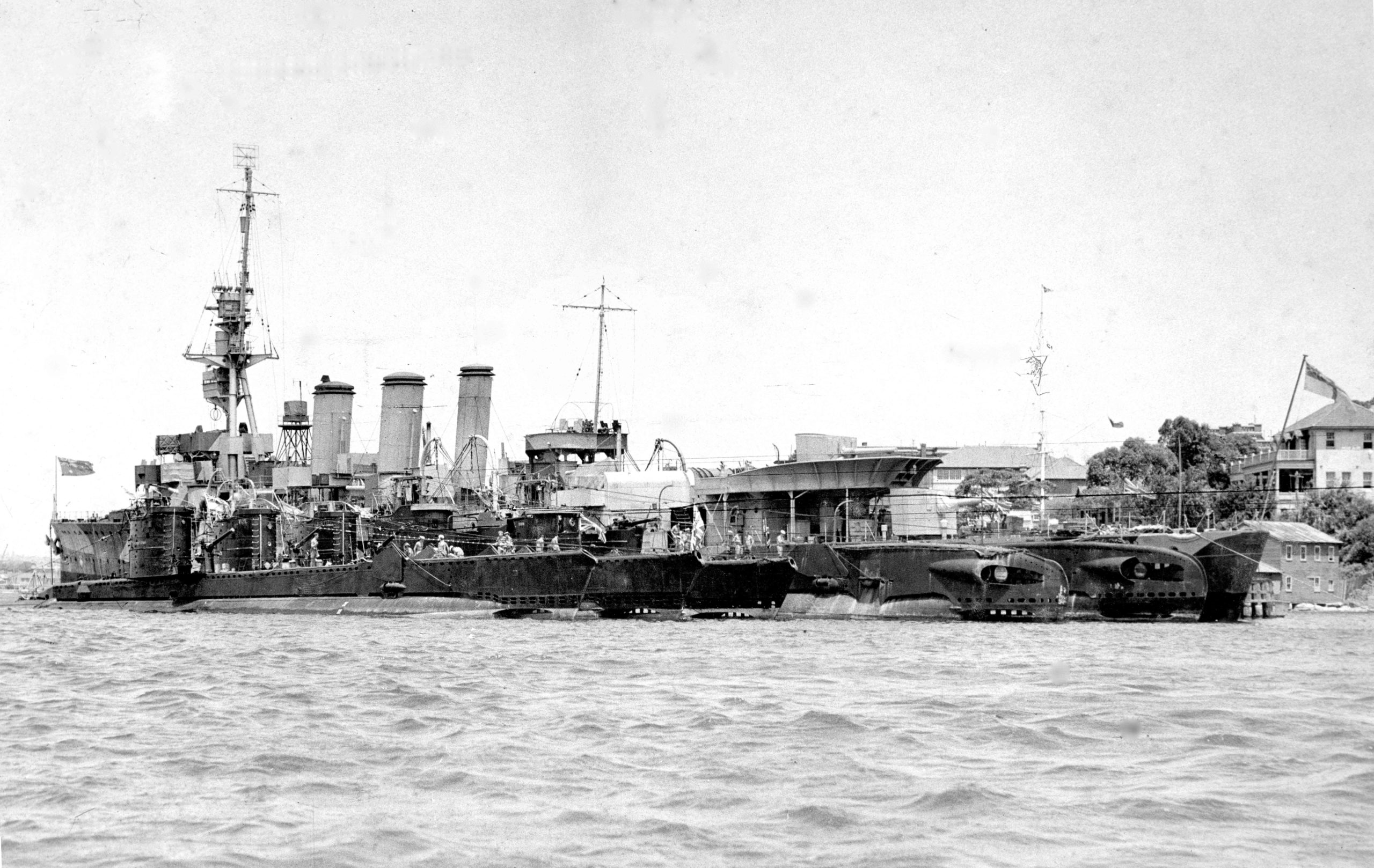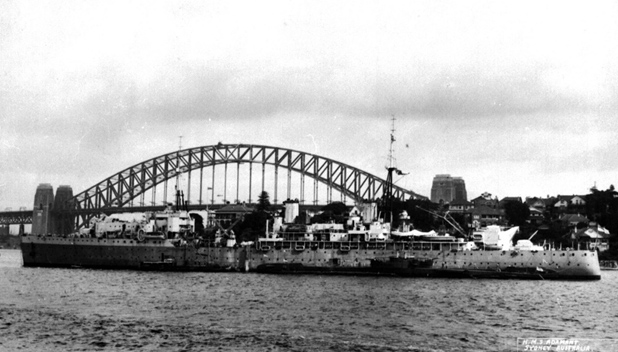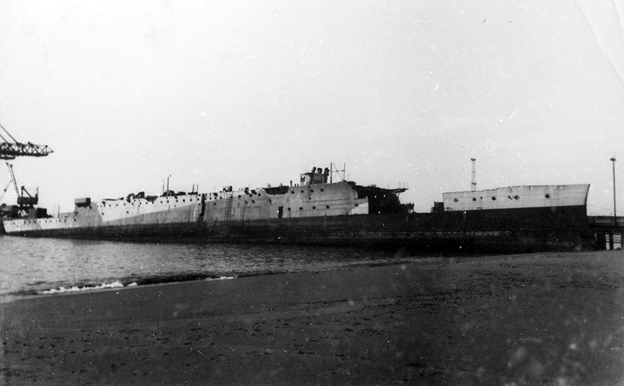By John C. Jeremy, AM Vice President NHSA
The archives of the Royal Sydney Yacht Squadron are extensive and contain a priceless collection of material relating to sailing and the maritime life of Sydney. Hanging on the wall of the archives room at the Squadron is an unusual photograph. It is identified as “HM Submarines Virtue, Voracious, Vox, Turpin and Taurus alongside HMAS Adelaide, 23 January 1946”. The framed photograph was presented to the Squadron by Commander G. P. S. Davies OBE RN, Senior Officer Submarines Sydney 1945–46.

In the photograph, the cruiser HMAS Adelaide is secured to dolphins in Neutral Bay almost directly opposite the Squadron. HMAS Adelaide had been built in Sydney at Cockatoo Island and completed in 1922. She was modernised shortly before the outbreak of World War II but by 1945 she was approaching the end of her useful life and her sea-going service ended when she arrived in Sydney on 6 January 1945. She was decommissioned on 26 February 1945.
With the build-up of the British Pacific Fleet (BPF) in 1945, some 29 submarines of the Royal Navy were based in Australia, primarily at Fremantle and later in Sydney. HMAS Adelaide was recommissioned on 19 May 1945 under the command of LCDR H. W. Goodchild RAN as a tender to the Sydney shore establishment HMAS Penguin. HMAS Penguin had been commissioned at Balmoral on 14 July 1942 and, from 1949 until HMAS Platypus was commissioned in Neutral Bay on 18 July 1967, was the base and shore accommodation for Royal Navy 4th Submarine Division after it had been reconstituted in 1949.
The role of HMAS Adelaide at her berth off the Squadron was that of a base and accommodation ship for submarines of the BPF in Sydney. British submarines were supported in Australia by three Royal Navy Depot ships, HMS Maidstone, HMS Adamant and HMS Bonaventure. The submarines alongside HMAS Adelaide in the photograph belonged to the Royal Navy’s 4th Submarine Flotilla. HMS Adamant was responsible for that Flotilla from October 1943, at first based in Colombo and Trincomalee. In April 1945 Adamant moved to Fremantle and in October that year to Hong Kong. She arrived in Sydney on 3 April 1946 and was secured for a time at the Kirribilli dolphins, around the corner from the Squadron near Admiralty House. A destroyer depot ship, HMS Tyne, had also been located there for a time during 1945. Adamant left Sydney for the last time on 5 July 1946.

As the pace of the war in the Pacific grew, there was a shortage of berths for ships in Sydney and dolphins were installed in the bays and other locations around Sydney Harbour. In addition to the dolphins at Kirribilli and Neutral Bay, others were placed in Athol Bight, Little Sirius Cove, Mosman Bay, Shell Cove, off the end of Kurraba Point and off the eastern shore of Clark Island. HMAS Adelaide presumably remained at the Neutral Bay dolphins until she was decommissioned on 13 May 1946, as most of the submarines of the BPF returned home in early- to mid-1946. A search of the National Archives collection reveals a document dated 16 May 1946 Specification for demolition and removal of two dolphins, Sydney Harbour [1]— possibly those off the Squadron.
HMAS Adelaide was stripped in Sydney and sold on 24 January 1949 to Australian Iron and Steel Pty Ltd. On 1-2 April 1949 she was towed by the tug HMAS Reserve to Port Kembla, where she was broken up.

The three V-class submarines in the photograph, Virtue, Voracious and Vox, had primarily been used for anti-submarine training. At 1500 on 23 January 1946 (the date of the photograph) they sailed from Sydney for Fremantle. Engine problems resulted in a four week stop in Williamstown, Victoria, for repairs. On arrival in Fremantle they were reunited with HMS Adamant and finally left Australia on 29 March 1946 for Trincomalee. There was no place in the post-war RN for these submarines, despite being only a few years old. The three submarines arrived in Cochin, India, on 19 May 1946 and were broken up for scrap.
Of the submarines HMS Turpin returned to the UK and continued in service. She was sold to Israel in 1965 and was renamed Leviathan, finally being scrapped in 1978. HMS Taurus also returned home and was transferred to the Royal Netherlands Navy on 4 June 1948 and commissioned as Dolfijn. She was returned to the Royal Navy on 7 November 1953 and continued in RN service as Taurus until she was sold for scrap in April 1960.
The dolphins were progressively removed after the war. Those in Athol Bight and Shell Cove were used for many years as berths for the RAN’s reserve fleet and the Kirribilli dolphins were used on occasions for visiting ships until the 1980s.
Reference:
- National Archives of Australia NAA: SP155/1, DEF42751H




